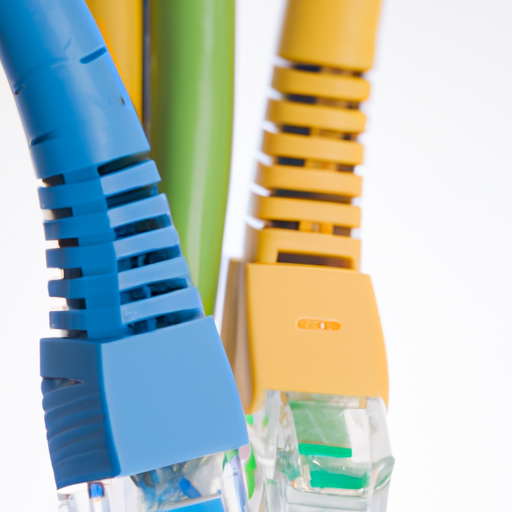-
Table of Contents
“Connecting Your Business with Reliable Network Cabling Solutions”
Introduction
Network cabling is the process of connecting computers, servers, and other network devices to a network. It involves the installation of cables, connectors, and other hardware components to create a reliable and secure connection between the devices. Network cabling is an important part of any network infrastructure, as it provides the physical connection between the devices and the network. It is also important for ensuring the performance and reliability of the network. In this article, we will discuss the different types of network cabling, the installation process, and the benefits of using network cabling.
The Benefits of Installing a Structured Network Cabling System
Installing a structured network cabling system is an important step for any business that wants to ensure reliable and efficient communication between its employees and customers. Structured cabling systems provide a number of benefits that can help businesses increase productivity, reduce costs, and improve customer service.
One of the primary benefits of a structured cabling system is improved reliability. Structured cabling systems are designed to be highly reliable and resilient, meaning that they can withstand the rigors of daily use without experiencing any downtime. This is especially important for businesses that rely on their network for critical operations, such as customer service or financial transactions. With a structured cabling system, businesses can be sure that their network will remain up and running, even during times of peak usage.
Another benefit of a structured cabling system is improved scalability. Structured cabling systems are designed to be easily expanded and upgraded as needed. This allows businesses to add new devices or services to their network without having to completely replace their existing cabling infrastructure. This can save businesses time and money, as they won’t have to invest in new cabling every time they need to add a new device or service.
Finally, structured cabling systems can help businesses improve their customer service. By providing a reliable and efficient network, businesses can ensure that their customers can access the information they need quickly and easily. This can help businesses provide better customer service, as customers won’t have to wait for long periods of time for their requests to be processed.
Overall, installing a structured network cabling system can provide businesses with a number of benefits. By improving reliability, scalability, and customer service, businesses can ensure that their network is always up and running, and that their customers can access the information they need quickly and easily.
How to Choose the Right Network Cabling for Your Business
When it comes to setting up a business network, choosing the right network cabling is essential. The right cabling can ensure that your network runs smoothly and efficiently, while the wrong cabling can lead to costly downtime and other issues. Here are some tips to help you choose the right network cabling for your business.
1. Consider Your Network’s Needs: Before you start shopping for network cabling, it’s important to consider your network’s needs. Think about the type of data you’ll be transferring, the speed of your network, and the distance between devices. This will help you determine the type of cabling you need.
2. Choose the Right Type of Cable: There are several types of network cabling available, including twisted pair, coaxial, and fiber optic. Each type of cable has its own advantages and disadvantages, so it’s important to choose the right type for your network.
3. Consider the Cost: Network cabling can be expensive, so it’s important to consider the cost when making your decision. Make sure to compare prices between different vendors to get the best deal.
4. Look for Quality: When it comes to network cabling, quality is key. Make sure to look for cables that are made from high-quality materials and are designed to last.
5. Get Professional Help: If you’re not sure which type of cabling is best for your network, it’s a good idea to get professional help. A qualified IT professional can help you choose the right cabling for your business.
By following these tips, you can ensure that you choose the right network cabling for your business. With the right cabling, you can ensure that your network runs smoothly and efficiently.
The Basics of Network Cabling Installation
Network cabling installation is an important part of any business’s infrastructure. It is the process of installing the necessary cables and hardware to connect computers, printers, and other devices to a network. Proper installation is essential for the efficient operation of a network and the security of its data.
The first step in network cabling installation is to plan the layout of the cables. This includes determining the number of cables needed, the length of each cable, and the type of cable to be used. It is important to consider the environment in which the cables will be installed, as this will affect the type of cable and the installation process.
Once the layout is determined, the next step is to install the cables. This involves running the cables through walls, ceilings, and floors, and connecting them to the appropriate devices. It is important to ensure that the cables are properly secured and that they are not exposed to any potential hazards.
The next step is to connect the cables to the network. This involves connecting the cables to the appropriate ports on the network devices. It is important to ensure that the cables are properly connected and that the connections are secure.
Finally, the network must be tested to ensure that it is functioning properly. This includes testing the speed of the network, the reliability of the connections, and the security of the data.
Network cabling installation is an important part of any business’s infrastructure. Proper installation is essential for the efficient operation of a network and the security of its data. It is important to plan the layout of the cables, install the cables, and connect them to the network. Finally, the network must be tested to ensure that it is functioning properly.
Troubleshooting Common Network Cabling Issues
Network cabling issues can be a major source of frustration for IT professionals. Poorly installed or damaged cables can cause a variety of problems, including slow speeds, intermittent connections, and complete outages. Fortunately, there are a few steps that can be taken to troubleshoot and resolve common network cabling issues.
The first step is to check the physical integrity of the cables. Look for any signs of damage, such as frayed wires, broken connectors, or exposed insulation. If any of these issues are present, the cable should be replaced. Additionally, make sure that all cables are securely connected to the appropriate ports.
Next, check the network settings. Make sure that the correct IP address is assigned to each device, and that the correct subnet mask is being used. Additionally, check the router settings to ensure that the correct ports are open and that the correct protocols are enabled.
If the issue persists, it may be necessary to run a cable tester. This device will check the integrity of the cables and identify any potential problems. If any issues are found, the cables should be replaced.
Finally, if the issue is still unresolved, it may be necessary to contact the manufacturer of the network equipment. They may be able to provide additional troubleshooting steps or suggest a solution.
By following these steps, most network cabling issues can be quickly identified and resolved. However, if the issue persists, it may be necessary to contact a professional for assistance.
The Future of Network Cabling Technology
Network cabling technology is an ever-evolving field that is constantly pushing the boundaries of what is possible. As technology advances, so too does the need for faster, more reliable, and more secure network cabling solutions. In the coming years, we can expect to see a number of exciting developments in this area.
One of the most significant changes in network cabling technology is the emergence of fiber optic cables. Fiber optic cables are capable of transmitting data at much higher speeds than traditional copper cables, making them ideal for applications that require high bandwidth. Additionally, fiber optic cables are much more secure than copper cables, making them a great choice for applications that require a high level of security.
Another major development in network cabling technology is the emergence of wireless solutions. Wireless solutions allow for the transmission of data without the need for physical cables, making them ideal for applications that require mobility or flexibility. Wireless solutions are also becoming increasingly secure, making them a great choice for applications that require a high level of security.
Finally, we can expect to see a number of advances in the area of network cabling standards. As technology advances, so too do the standards that govern the installation and use of network cabling. These standards are designed to ensure that all network cabling is installed and used in a safe and secure manner.
The future of network cabling technology is an exciting one, and it is sure to bring a number of exciting developments. As technology advances, so too will the need for faster, more reliable, and more secure network cabling solutions. With the emergence of fiber optic cables, wireless solutions, and improved standards, the future of network cabling technology looks bright.
Conclusion
Network cabling is an essential part of any network infrastructure. It provides the physical connection between the various components of the network, allowing for the transmission of data and communication. It is important to choose the right type of cabling for your network, as it can have a significant impact on the performance and reliability of the network. With the right cabling, you can ensure that your network is running smoothly and efficiently.
